Fractional CO2 Laser for Scars: The Complete Guide to Facial Scar Treatment
What Is Fractional CO2 Laser Scar Treatment?
Fractional CO2 laser treatment is a state-of-the-art procedure that uses a carbon dioxide laser with a wavelength of 10,600 nm to create controlled micro-injuries in the skin. Unlike older laser systems, the fractional technique treats only tiny “islands” of tissue, preserving the surrounding healthy skin. This stimulates the body’s natural healing response, boosting the production of collagen and elastin to gradually smooth and level scarred areas.
The technology is based on fractionation—splitting the laser beam into thousands of microscopic columns, typically 0.12 to 2 mm in diameter. With a scanning area as large as 20×20 mm, the laser can treat broad facial regions evenly, reducing the likelihood of hyperpigmentation. Available modes—fractional, fully ablative, and hybrid—allow customization for different skin types and scar conditions. Thanks to ultra-pulse technology, patients experience minimal discomfort and reduced thermal injury to adjacent tissues.
In clinical practice, the fractional CO2 laser is valued for its ability to reach deep dermal layers where scars originate. This leads to true skin remodeling, not just surface-level improvement. Whether you have atrophic or hypertrophic scars, this treatment can help you regain smoother, clearer skin.
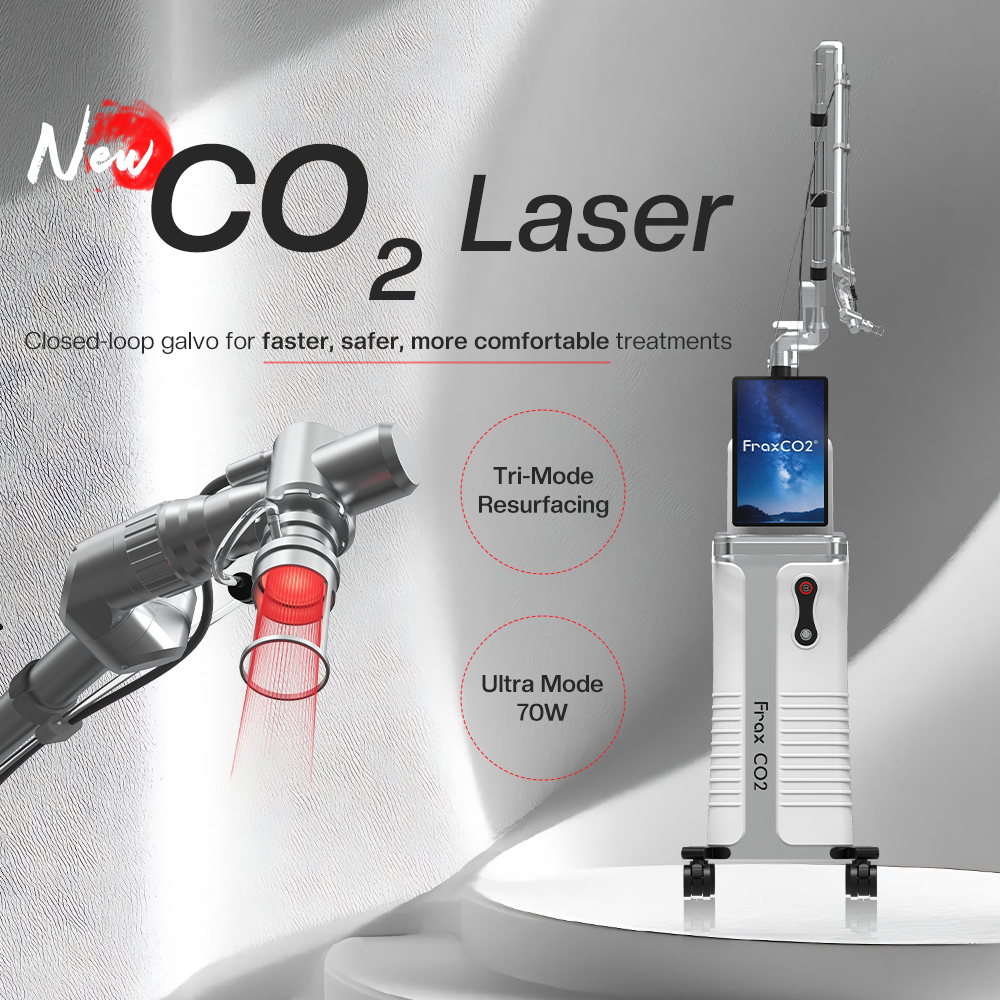
How Fractional CO2 Laser Works on Scars
Basic Mechanism
The fractional CO2 laser works by vaporizing thin layers of damaged skin and activating fibroblasts—the cells that produce collagen. As the laser creates microscopic channels, it initiates a localized healing process that spreads to the surrounding tissue. This leads to faster recovery—typically 5–7 days—compared to 2–3 weeks with fully ablative lasers.
An intelligent digital control system ensures uniform energy delivery, making the procedure two to three times faster than conventional laser scanning. This also reduces the risk of overheating and discomfort. A 360° rotating articulated arm offers flexibility, allowing the handpiece to adapt to facial contours for precise application.
Treatment Steps
A typical fractional CO2 laser session includes the following stages:
-
Preparation: Cleansing and application of a topical anesthetic. This takes about 15–30 minutes.
-
Laser Application: The device is passed over the target area, delivering micro-pulses. Hybrid mode may be used for deeper scars.
-
Aftercare: Soothing creams or gels are applied. Most patients can return to daily activities within 2–3 days.
Clinical studies report 70–80% improvement after 3–5 sessions. To ensure safety, it is important to use certified equipment such as Winkonlaser’s FraxCO2.
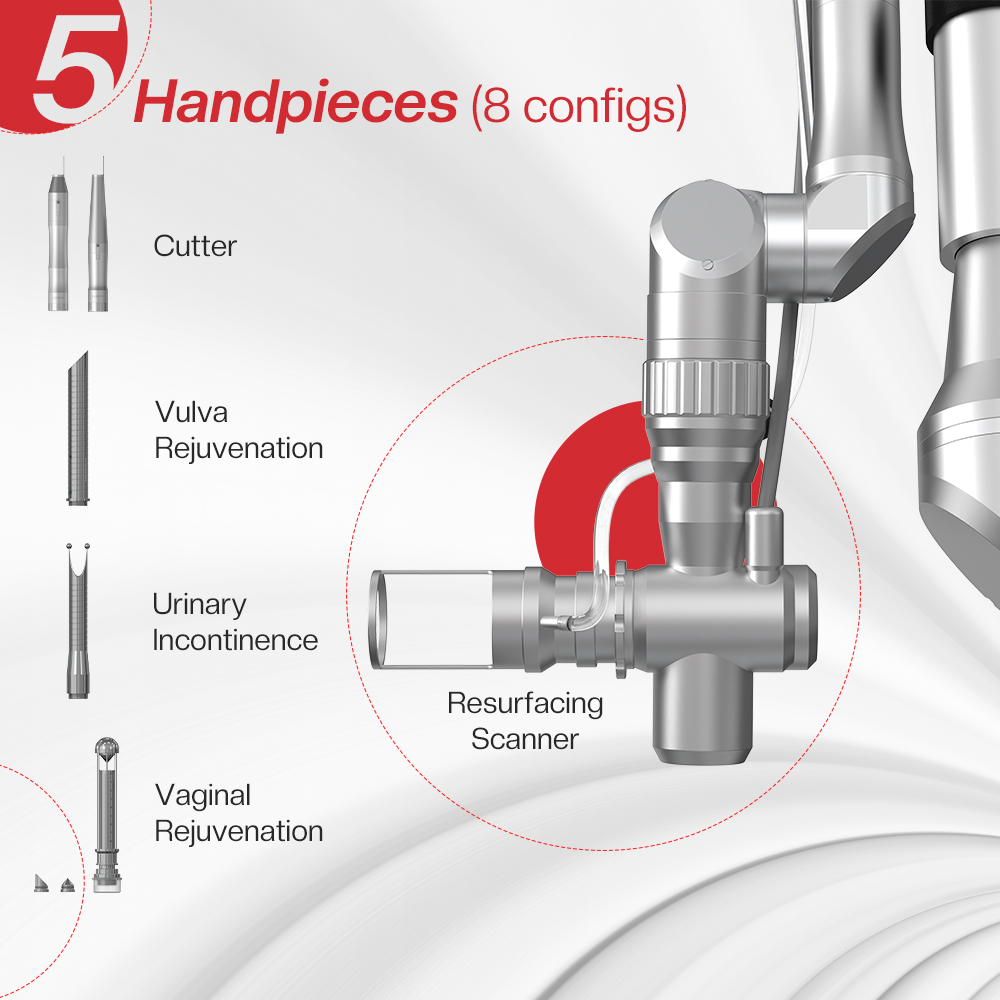
Types of Scars That Can Be Treated
Fractional CO2 laser is effective for a variety of scar types, including:
Atrophic Scars
These depressed scars, commonly caused by acne or chickenpox, result from collagen loss. The laser promotes new collagen formation, helping to fill in these indentations. Patients often notice improved skin texture after the first session.
Hypertrophic and Keloid Scars
Raised scars caused by surgery or trauma can be flattened using the laser’s ablative mode. Volume may be reduced by 50–60%. Keloids often require combination therapy for best results.
Post-Traumatic Scars
Scars resulting from cuts or burns can be improved as the laser penetrates 1–2 mm deep, restoring skin elasticity. Studies show up to 75% reduction in visibility after a full treatment course.

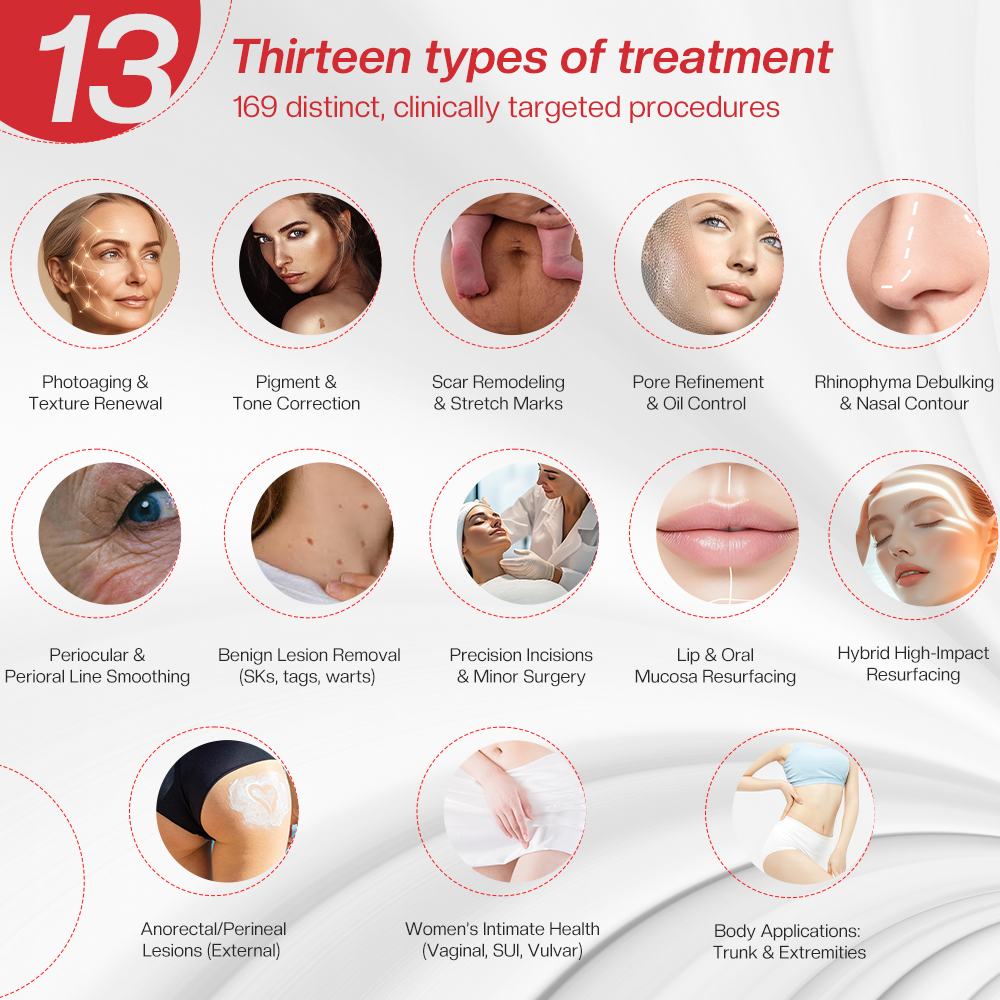
Before and After: What to Expect
Visible Progress
Right after the procedure, the skin will be red and slightly swollen. Between days 3 and 5, the skin begins to renew itself: scars become less visible, and texture becomes more even. Final results develop over 3–6 months as new collagen continues to form.
Those with acne scars observe not only smoother skin but also reduced pore size. Deeper scars may require sessions repeated every 4–6 weeks. Before and after photos consistently reveal a clear transition from uneven, scarred skin to a more radiant complexion.
What Affects the Outcome?
-
Skin Tone: Better outcomes on lighter skin; darker skin requires careful settings.
-
Scar Depth: Superficial scars may need only 1–2 sessions; deeper scars can require up to 5.
-
Aftercare: Sun avoidance and high-SPF sunscreen are essential.
Patient satisfaction rates are around 90%, with very few reporting significant side effects.
Benefits of Fractional CO2 Laser for Facial Scars
Key advantages of this treatment include:
-
Precision: 0.12 mm microbeams limit damage—perfect for delicate facial skin.
-
Versatility: Three operating modes support everything from scar removal to intimate rejuvenation.
-
Safety: Multi-level safety mechanisms prevent overheating.
-
Fast Healing: Ultra-pulse technology shortens downtime.
-
Wide Usage: Effective for scars, wrinkles, and pigmentation.
Unlike chemical peels, fractional CO2 laser offers long-lasting improvement without affecting the whole body. For clinics, it is a cost-effective solution—one system can perform up to 169 different procedures.
Explore more at Winkonlaser’s product page.
About Winkonlaser
Winkonlaser (Beijing Wenkang Laser Technology Co., Ltd.) is a leading global manufacturer of aesthetic and medical laser systems. Established in 2012, the company serves 120 countries and maintains warehouses in the USA, France, and Turkey. With over 12 years of experience and a product range exceeding 50 devices—including the AresLite, Renasculpt, and FraxCO2—Winkonlaser holds international certifications such as CE, Medical CE, RoHS, FDA, and ISO 13485. The company regularly exhibits at international trade shows and offers comprehensive services from product design to after-sales support, including OEM and ODM options. Learn more on the official website.
Frequently Asked Questions
Is fractional CO2 laser safe for sensitive skin?
Yes. With appropriate settings—such as low power and ultra-pulse mode—the treatment is well-tolerated even by sensitive skin.
How many sessions are needed for visible improvement?
Most people need 3–5 sessions, scheduled 4–6 weeks apart. Superficial scars may improve in 1–2 sessions, while deeper scars require a full series.
What are the side effects?
Temporary redness, swelling, and peeling are common for up to a week. Hyperpigmentation is rare if proper aftercare, including sun protection, is followed.
Can it be combined with other treatments?
Yes. It can be paired with fillers or PRP therapy for enhanced outcomes. A specialist should plan combination treatments.
How long do the results last?
With good skincare and sun protection, results can last 5–10 years. Yearly maintenance sessions can help prolong the effects.





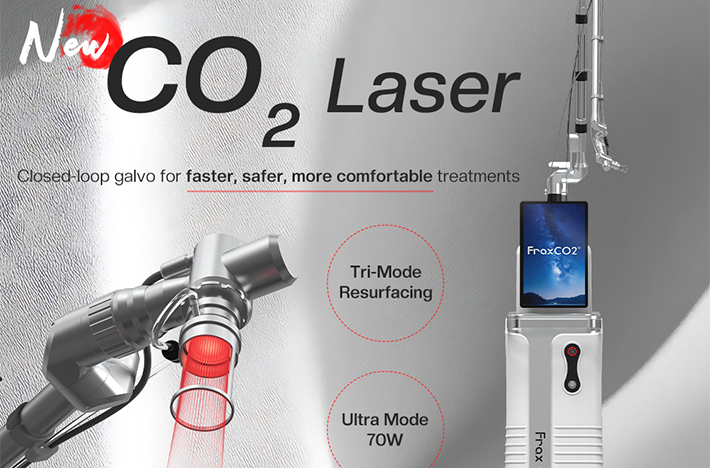
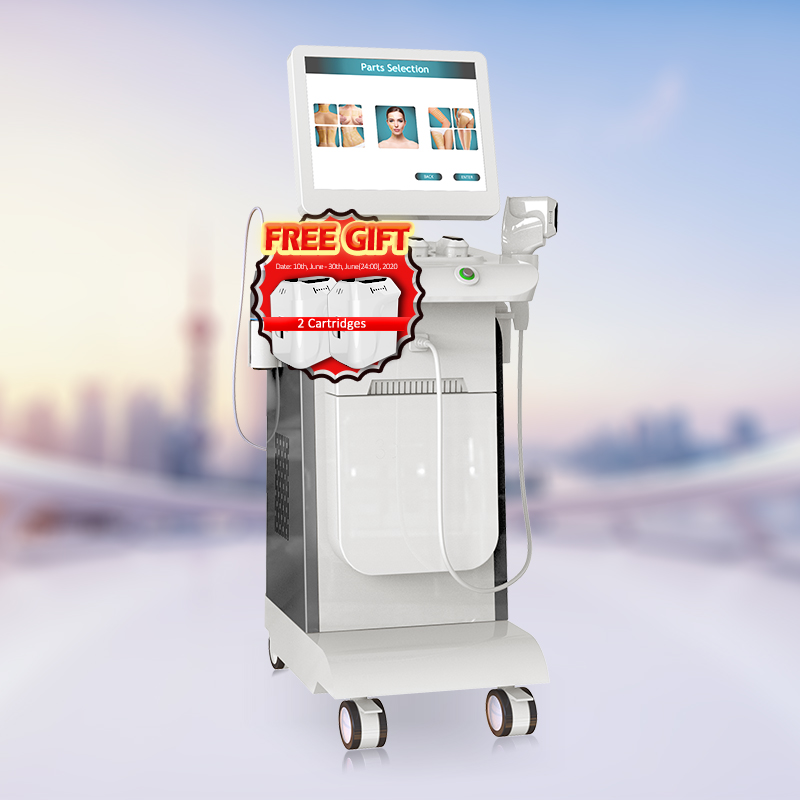






Leave a Reply
You must be logged in to post a comment.